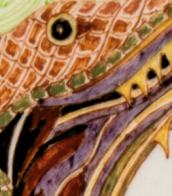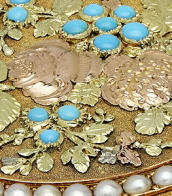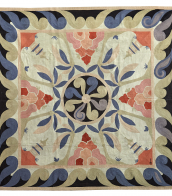articles ménagers

Joseph Fernand Henri Léger was a French artist renowned for his innovative approach to Cubism and his transition towards a figurative, populist style. Born in Argentan, Orne, Lower Normandy, Léger's early career was marked by a stint as an architectural draftsman and a series of educational pursuits that eventually led him to Paris, where he embraced painting seriously. His artistic journey was significantly influenced by the bold abstractions of Cubism, characterized by geometric shapes and a vibrant palette, distinguishing his work from his contemporaries with what came to be known as "Tubism".
Léger's service in World War I profoundly impacted his artistic direction, leading him to adopt a 'mechanical' style that depicted the modern industrial world with sleek, tubular forms. This period saw creations like "Soldier with a Pipe" and "The Card Players," reflecting his war experiences and the mechanical aesthetics of the time. The post-war era encouraged Léger to explore the mechanical style further, evident in works like "The Bargeman" and "Mechanical Elements," highlighting the pace of technological advancement.
Throughout his career, Léger's work evolved, notably in the 1920s, where he aligned with Purist ideas, blending classicism with modernity. This phase is exemplified in "Woman with a Cat," showcasing a classical form with a modern, polished finish. By the 1930s, Léger's art took a more figurative, populist turn, aiming to democratize contemporary art and make it more accessible. His commitment to art education, especially for the common worker, underscored his belief in the social role of art.
For those intrigued by Joseph Fernand Henri Léger's groundbreaking contributions to modern art, his works can be found in prestigious museums worldwide. His legacy continues to inspire art collectors and enthusiasts alike. To stay updated on exhibitions and auction events featuring Léger's work, sign up for updates and embrace the unique opportunity to explore the richness of his artistic endeavors.


Mathieu Matégot was a Hungarian / French designer and material artist. He was one of the most renowned French designers of the 1950s.
Following the war, Matégot established a workshop for making handcrafted furniture using a variety of materials such as metal, rattan, glass, formica, and perforated sheet metal. The workshop made chairs, tables, sideboards, desks and other objects that he had designed. At first based in Paris, the workshop later moved to Casablanca. All the furniture and other objects had clever, practical and amusing designs. Distributed to decoration shops in editions of 200, his work was extremely successful.


Claude Lalanne is a French artist, sculptor and ceramicist known for her chimerical sculptures. Since the 1960s, she has worked as a couple with her husband François-Xavier Lalanne.


Georges Jouve was an important ceramist of the 20th century. At 17 years old, Jouve enrolled at the prestigious Ecole Boulle in Paris where he received theoretical instruction in Art History in addition to his technical studies as a sculptor. After Graduation in 1930 he first embarked on his artistic career as a theatrical set designer. During World War II, Jouve was captured by the Germans and interned in a German camp. After several attempts he escaped from the camp and took refuge at his step parents home in a potters village in the South of France called Dieulefit. In 1944, Jouve and his family moved back to Paris. He opened his studio in Paris and was invited by Jacques Adnet to participate in the exhibition “La Ceramique Contemporaine” by the Compagnie des Arts Francais. He then participated annually in numerous 'Salons' in France and internationally such as the “Salon des Artistes Decorateurs” in Paris, Association Francaise d'Action Artistique in Rio de Janeiro, and Vienna, Toronto, Rome, Milan, and Cairo.


Mathieu Matégot was a Hungarian / French designer and material artist. He was one of the most renowned French designers of the 1950s.
Following the war, Matégot established a workshop for making handcrafted furniture using a variety of materials such as metal, rattan, glass, formica, and perforated sheet metal. The workshop made chairs, tables, sideboards, desks and other objects that he had designed. At first based in Paris, the workshop later moved to Casablanca. All the furniture and other objects had clever, practical and amusing designs. Distributed to decoration shops in editions of 200, his work was extremely successful.

_4.jpg)
John Goddard (1724–1785) was a distinguished American cabinetmaker whose work significantly influenced 18th-century furniture design, particularly in Newport, Rhode Island. Born on January 20, 1724, in Dartmouth, Massachusetts, Goddard apprenticed under Job Townsend, a prominent Newport cabinetmaker. This apprenticeship not only honed his craftsmanship but also led to his marriage to Townsend's daughter, Hannah, further solidifying his ties to the esteemed Townsend-Goddard furniture-making dynasty.
Establishing his own workshop in Newport, Goddard became renowned for his exceptional skill and innovative designs. He is credited with originating the block-front knee-hole desks and secretary desks, which became highly sought after by affluent clients. His creations are characterized by distinctive features such as the block-front facade, intricately carved shells, and robust ball-and-claw feet. These elements not only exemplify the aesthetic preferences of the period but also showcase Goddard's meticulous attention to detail and mastery of proportion.
One of Goddard's most notable patrons was Nicholas Brown, a prominent Providence merchant. In the early 1760s, Brown commissioned a set of elaborately carved mahogany side chairs from Goddard. These chairs, distinguished by their pierced crest shells, double-scrolled splats, and elegantly shaped stretchers, are considered masterpieces of Newport craftsmanship. The collaboration between Goddard and Brown underscores the cabinetmaker's reputation as "the neatest workman in America," a testament to his superior craftsmanship and design sensibilities.
Goddard's influence extended beyond his lifetime, as his workshop became a training ground for future artisans, including his sons. Following the British occupation of Newport, three of his sons relocated to Nova Scotia, where they continued the family's cabinetmaking tradition, thereby disseminating the Newport style to new regions. The Goddard family's contributions to furniture making have left an indelible mark on American decorative arts, with their pieces remaining highly prized by collectors and museums alike.
Today, John Goddard's works are preserved in esteemed institutions such as The Metropolitan Museum of Art, which houses a side chair attributed to him. This chair exemplifies the characteristic Newport knee carving and the spherical ball feet associated with Goddard's style, serving as a tangible representation of his enduring legacy in American furniture design.




Ado Chale is a Belgian artist and designer best known for his exquisite mosaic inlays. Pieces of wood, minerals, or bone are sliced, arranged, and coated with resin to form the opulent surfaces. His furniture and domestic objects reference the natural world not only through the use of precious stones, metals, and organic materials, but also through the textures, patterns, and forms they express. Chale opened his first gallery in 1962. He exhibited jewelry and small side tables adorned with his unique inlay and sourced various gems and rocks via international travel. The self-taught craftsman then incorporated his acquisitions into larger pieces of furniture and sculptures attractive for their beauty and novelty in the 1970s. His work has been exhibited at the Ixelles Museum in Belgium, in France at the Museum of Fine Arts in Nancy and the Palais des Papes in Avignon, and in Japan at retail chain Seibu’s contemporary art museum.


George Washington is the first popularly elected president of the United States of America and one of the founding fathers of the United States.
Born into a noble family in colonial Virginia in February 1732, George Washington served as a Virginian officer with British troops during the French-Indian War (1754-1763) from 1754-1758. This was a territorial war fought largely between the colonies of Britain and France that escalated into a worldwide conflict between the two countries. J. Washington was at the center of the conflicts in the disputed Ohio River Valley area.
In June 1775, he was elected commander-in-chief of the Continental forces in the war already for independence from Great Britain. He commanded American troops throughout the war, becoming famous for his perseverance and bravery.
In 1787, J. Washington represented the state of Virginia as a delegate to the Constitutional Convention. This convention created the Constitution of the United States. In 1789, the Electoral College unanimously elected George Washington president, and in 1792 he was re-elected for a second term. Thus George Washington was in office as President of the United States from April 30, 1789 to March 4, 1797.
As head of state, he helped to strengthen the Union, implement the principles of the Constitution and build the capital of the United States. He was engaged in the formation of the central authorities and system of government, created precedents for the institution of presidents, encouraged the development of the economy, maintained friendly relations with Congress. In foreign policy Washington avoided interference in the affairs of European states.
After leaving the post of president, George Washington lived in Mount Vernon Manor.









































































